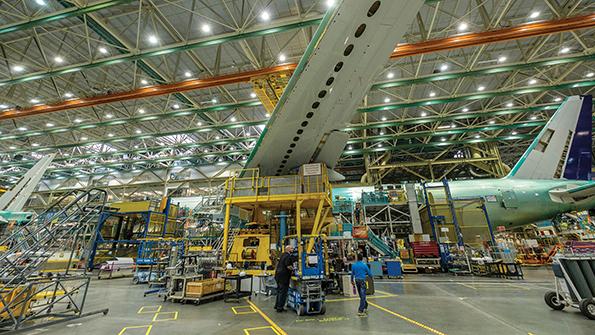
When Boeing launched the 777X in 2013, times were good. International trade was booming and the three big Middle East carriers were still on a steep growth trajectory. Even the Airbus A380 was still in play.
Seven years later, times could not be more different. The COVID-19 pandemic has shuttered international flying, affecting the market for all long-haul aircraft. But for the 777X, a more concerning trend started earlier.
As smaller long-haul aircraft such as Boeing’s own 787 and the Airbus A350 have become available, the market has shifted structurally toward them. There is no need to obtain large aircraft to drive down unit costs. Instead they are now mainly associated with a big investment risk. The trend has ultimately killed the A380 and has turned into a risk for the 777X.
The backlog is dominated by Emirates, Qatar Airways and Etihad, which combined hold around 240 of the 350 777X firm orders Boeing has been able to secure. However, Emirates (with 156 firm orders according to Boeing) is gravitating toward the smaller 787 and the A350 as it rebuilds post-pandemic. Etihad has since reversed course and no longer has the ambition to compete with its larger Gulf rivals on the same scale. Other customers, such as Cathay, British Airways and Lufthansa, are in massive trouble as international markets recover more slowly.
Angus Clarke, chief commercial officer at Air France—a major 777 operator—said at the CAPA Live summit in December that the A350-1000 will be the largest aircraft the airline plans to operate in the future.
Boeing has a different view. “I think as the whole industry recovers, it’s going to have a huge upside, so I think it’s a great airplane to fill that market,” says Brad Zaback, vice president and general manager of the 777/777X program.
Structurally, the 777X is more exposed because it is geared toward thick long-haul traffic streams that currently do not exist. Most observers agree they will come back, but airlines have grounded relatively young but now cheap 777s, and that could affect sales of new aircraft in the short-to-medium term.
Could the program face the same fate as the A380? Probably not anytime soon. Most of the development money is already spent. The 787-10 cannot compete with the A350 in size and range. Continuing the legacy 777 is not an option as its economics are inferior to the A350.
However, the 777X’s outlook is problematic, and Boeing has already reacted. Work on the smaller 777-8 is frozen for now. The combined 777 and 777X rate is slowing from five per month to just two in 2021 and looks likely to remain at that level for some time. Boeing has delayed first deliveries of the 777-9 to 2022.
“As with any development program, there are inherent risks that can affect schedule,” Boeing CEO Dave Calhoun says. “While we continue to drive toward entry into service in 2022, this timing will ultimately be influenced by certification requirements defined by the regulators.” And by the customers.




Comments
That is what happens when your focus is on share buy back and boosting the stock so the CEO get a good retirement as he exits the sinking ship.